Sampling in music is when you take a portion of a song and manipulate it to make it your own. The sample could be a section of music, drum fill, drum break, vocal line, or even a sound effect.
When sampling a music producer will listen to the song they are sampling and capture portions of it (chopping the sample). Next, they will arrange the different samples they captured to create their own original arrangement (flipping the sample).
Sample: verb (sampled, sampling)
1. take a portion of (something) as a sample.
So the sampling process involves the sampling of a sound, music, or noise and recreating it to make a new creation.
Sampling is used by many hip-hop artists today as a way to build off previous works made by other artists. It is sometimes considered wrong or unoriginal, but sampling can be very creative and is an art form itself.

Terms Used When Sampling Music
When sampling there are a few terms used during the process that every producer should know:
- Chop: Taking a portion or cutting (chopping) sections of the sample to use as your own.
- Flip: Turning the sample (flipping it) into something new and original.
- Pitch: Pitching a sample up or down refers to changing the key of the sample. Ex: Pitching a sample down in the key of C means going to B, A#, A, etc.
- Clear: The legal process of obtaining the permissions (clearing the sample) to use the sample for commercial use (this also includes uploading to streaming platforms).
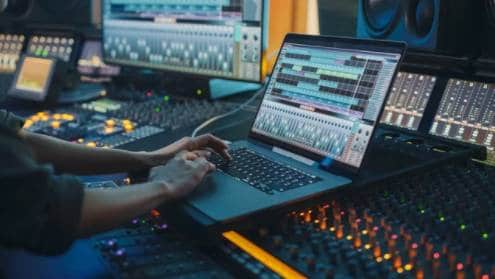
Sampling vs Covering: What’s The Difference?
There are many similarities between sampling and covering music, but there is also a difference. Sampling can resemble covering, though sampling’s main goal is to take another artist’s song and completely change it into an entirely different song.
Sampling uses the influence of another artist but changes it into something new. This can be done by either sampling an instrument from their song or sampling the entirety of the track itself. The goal is to create a different sound that differs from the original artists’ work.
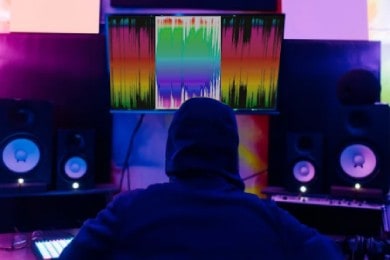
However, covering music is taking somebody’s song and refining it to make it sound like your own. This is generally done by maintaining the original melody throughout but changing up the lyrics or instruments used.
A cover song is a new version of a song that already exists. A cover song may be a version of the original song that tries to replicate as close as possible or it may differ greatly from the original by changing its key, adding new instrumentation, or even changing its genre.
Another key difference found in sampling and covering music is that sampling tends to be more focused on making an entirely new sound while covering has a goal of sustaining the original artist’s songs.
But, in the end, there is a reason why producers need to clear samples, as it is part of another artist’s composition and sound.
While a cover song has many resemblances (melodies, chord progression, lyrics, etc) to be called an original song. It is intentionally based on an already existing song and royalties must be paid to the original artist.
Examples of Sampling
Sampling in music today involves using previously recorded songs and flipping them into new compositions. The procedure to sampling a song involves chopping it, flipping it, and then clearing the samples if they were not from a royalty-free sample pack.
In FL Studio sampling can be done using Edison, FL Slicer, or chopping the sample while it’s in the music arrangement section.
Arrangement Chopping
Chopping in the arrangement section can be done in any DAW and is a fun way to chop samples up.

FL Slicer Chopping
The FL Slicer plugin chops samples for you., It can chop them based on where chord changes or new sounds occur (seen in the picture below), or there are options to chop on the eighths, quarters, half, whole, etc.
This method allows you to use the piano roll and either pencil in the chops or jam out – both great methods and a great way to come up with something unique and far from the original sample.
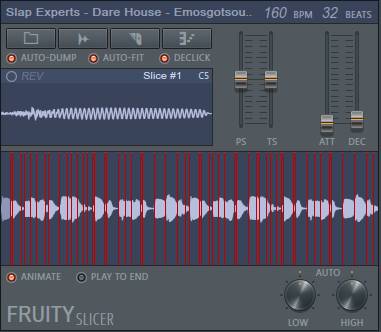
Chopping Using Edison
Chopping using Edison is similar to chopping in the arrangement section but gives a different feel. It allows for more precise chopping and will make each chopping section unique (while doing so in the arrangement section it has to be done manually).
Simply highlight the section you want and drag it into the arrangement section or into FL Slicer to chop it further!
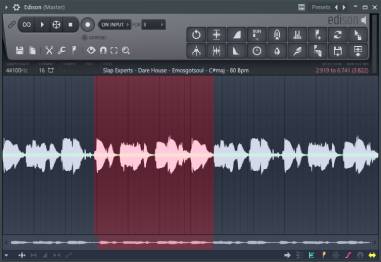
Where Do Samples Come From?
Popular sources of sampling include vinyl records, cassette tapes, radio broadcasts, compact discs, and sample packs.
Although sampling older records and other artists is not as common among newer producers, due to having to clear the samples, sample packs have made it easy to sample and still sell your beats.
Sample packs are so widely used now because many sample packs sell melodic loops that are royalty-free.
Summary
Sampling in music involves using previously recorded songs in new compositions. Other ways to describe sampling can be chopping up the sample or flipping the sample.
Sampling is used by many producers today as a way to build off previous works made by other artists. The sampling process involves taking a portion of an existing song and recreating it to make it your own.
Most of the time it’s common practice for music producers to use sampling as their main source, due to how readily available it is and how quickly you can create a beat while using one.
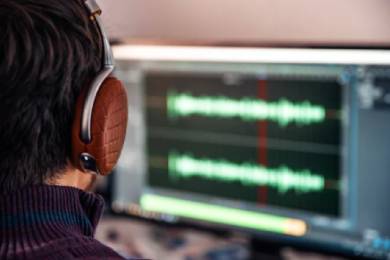

2 thoughts on “What Does Sampling Mean In Music?”
Comments are closed.